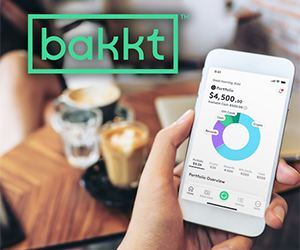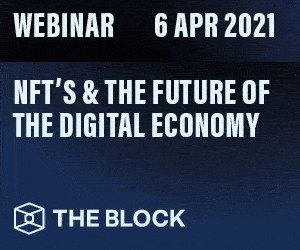
Key Takeaways
- In an exclusive interview with Crypto Briefing, Charles Hoskinson has discussed Cardano’s upcoming plans.
- Cardano is now heading towards the much anticipated hard fork codenamed Alonzo.
- The team is also training over 1,000 developers who want to write applications on Cardano.
Charles Hoskinson discusses Cardano’s forthcoming plans.
Cardano Founder Discusses Roadmap
With a market capitalization of more than $60 billion, Cardano is one of the world’s most valuable decentralized networks.
It launched in 2015 when one of the co-founders of Ethereum, Charles Hoskinson, conceptualized a new Proof-of-Stake blockchain. Cardano was meant to be a vast improvement on Ethereum, so instead of deciding the software architecture and features by himself, Hoskinson decided to adopt a peer-reviewed academic approach.
With this, the project embraced the philosophy of openness in software development and implemented software features using an evidence-based method. Over the years, Cardano’s research team has published over 100 academic research papers, all the way from distributed systems to programming languages and game theory.
Since its creation, the blockchain has evolved through different versions or eras, each adding new key features. The first iteration of Cardano, known as the Byron Era, started in Sep. 2017, and it allowed users to exchange Cardano’s ADA currency on a federated network by utilizing the Ouroboros consensus protocol.
Cardano’s following upgrade, called Shelley, took place in mid-2020 and achieved decentralization of the network consensus. With the launch, the network was upgraded to a state where the majority of nodes would be run by the community, not a centralized group.
After Shelley, the latest version of Cardano known as Goguen aims to bring new blockchain functionalities through a series of hard forks. For instance, in Mar. 2021, the team added support for native assets on Cardano with the Mary hard fork. To fulfill the next step of the Goguen era, Cardano is now heading towards a highly anticipated hard fork named Alonzo. This upgrade will enable developers to finally be able to build smart contracts on Cardano.
According to Cardano’s founder, Charles Hoskinson, hundreds of development teams are already striving to make their contributions. In an exclusive interview with Crypto Briefing, Hoskinson detailed Cardano’s plans to host oracles, stablecoins, DEXs, and NFT marketplaces on the upcoming Plutus smart contract platform.
Crypto Briefing: What is going to happen next with the Alonzo hard fork?
Charles Hoskinson: Cardano conducted a four-year research and development effort to come up with the ideal programming model for smart contracts. What is exciting is that Alonzo is actually where we are turning all of that on. Soon, we are going to launch the Pioneer Testnet and run that for two months and feature freeze at the end of June. It will be about four to six weeks to actually do the hard fork and turn on smart contracts for the mainnet. We have also started the Plutus Pioneer Program where we are training over 1,000 developers who expressed interest in writing decentralized applications (dApps) on Cardano.
CB: How is the Cardano ecosystem developing in terms of the various applications and use cases?
CH: We will have NFT marketplaces, DEXs, stablecoins, and oracles—all the usual suspects. A lot of these protocols are very easy to replicate. We are formalizing them at the moment so we have a complete understanding of how they run. We have a project with Runtime Verification, where we are writing the blueprints for all DeFi primitives like Uniswap, SushiSwap, and so forth. We are simply going to reimplement them on Cardano. It’s better, faster, cheaper, and more predictable on our system versus Ethereum. There is also an open question of liquidity and customers and we have some strategies for that. Another advantage that Cardano has over Ethereum is a built-in decentralized VC–Catalyst that has over $250 million available for funding dApps. We will fund 100 to 200 ventures in the next three months—not only new dApps but also migrations to Cardano.
CB: What are the different projects coming over to Cardano from Ethereum?
CH: We are finalizing arrangements with two dozen different dApps or platforms to come on over. That will happen over the next 180 days. It is a little hard to begin that conversation. Projects usually want to ask questions like whether they can have a testnet they can run on. Those will start when Alonzo Testnet comes over. Usually, the conversation is not explicit migration from Ethereum to Cardano. Instead, what we have seen industry-wide is that projects want to become multi-chain. Having said that, some have already expressed interest in fully migrating to Cardano. SingularityNet is one such migration.
CB: Cardano has been criticized for slow development. Was it peer-to-peer review that was perhaps responsible for that?
CH: Most of our delays were engineering delays, not scientific delays. It happened because we chose the wrong approach and wrong tactics, and we had to fix those and it took quite a bit of time. It’s a fair criticism that Haskell (programming language) was not ready when we chose it to build stuff. We had to modernize the language a little bit and that was one of the reasons we had so many delays in 2018 and 2019. We rewrote Cardano three times to get it to its current state. But we actually got back on track and we shipped Shelley, the Proof-of-Stake system, in 2020. We are now shipping smart contracts this year alongside many other things. If you compare our Proof-of-Stake development to Ethereum, they started two years earlier than us. We started developing Proof-of-Stake in 2016 whereas Vitalik [Ethereum’s founder] got Casper started in 2014. And despite this, we are already in the market with PoS and Ethereum has yet to fully migrate over.
CB: How are you ensuring decentralization when it comes to blockchain governance on Cardano?
CH: Cardano is the most decentralized in my view for block production. In Bitcoin, there are 10 major mining operations that produce more than 50% of the blocks. In comparison, Cardano has more than 2,000 stake pools and about 200 to 400 of the stake pools produce 80% of the blocks. So Cardano is about 20 to 40 times more decentralized in terms of block production. The system is elastic and is designed to get more stake pools over time. Eventually, we will have tens of thousands of state pool operators.
Disclaimer: The author did not hold the cryptocurrency mentioned in this article at the time of press.














